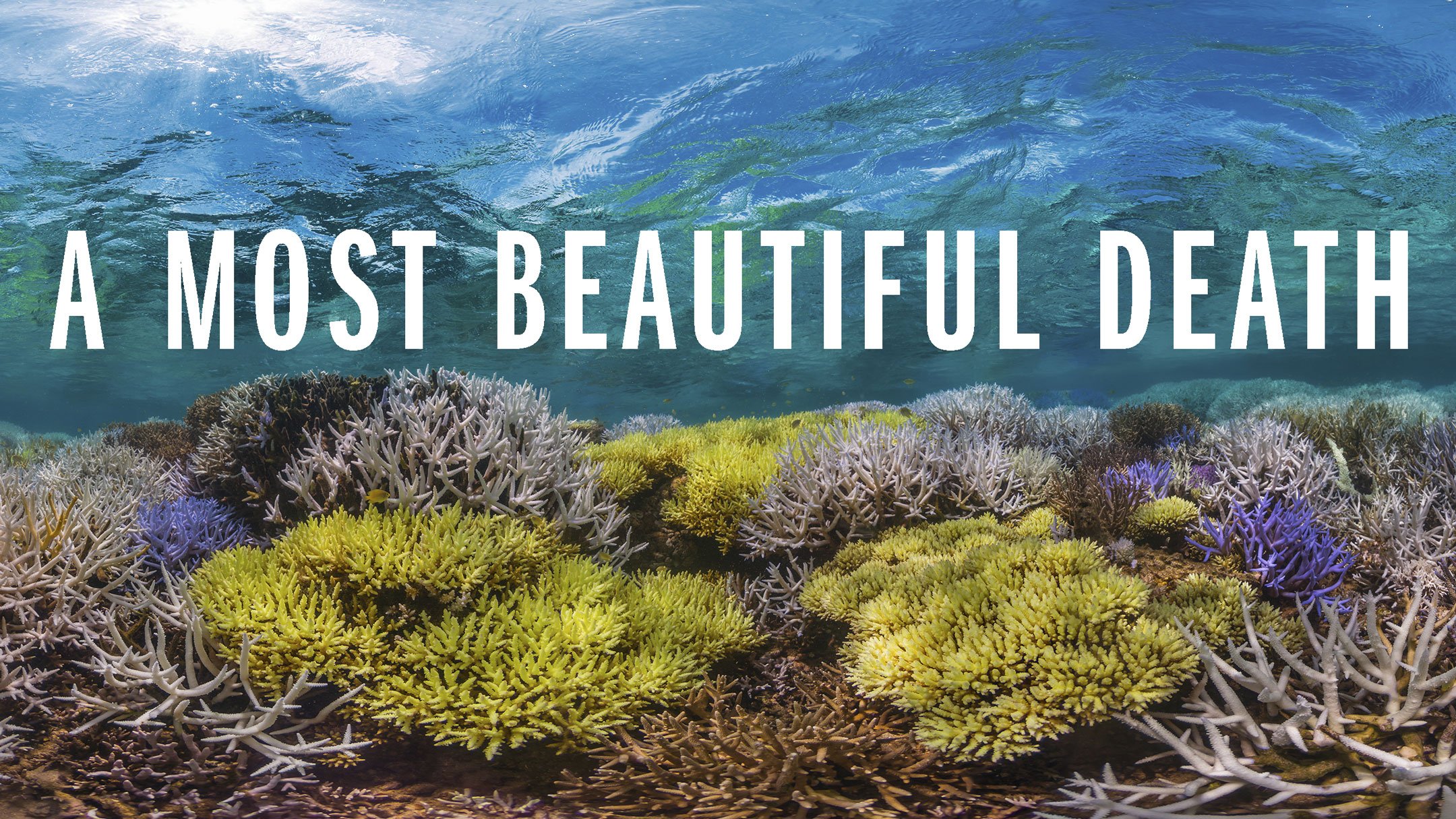Donate Together - 100% of SBD Rewards
This post is part of my Donate Together Series. Where I write articles on current topics that also seek donations for their caus. Together we can change the world, while educating ourselves. After the rewards is paid out I will supply a Proof of Donations.

Chasing Corals – An emotional movie about a hidden world

I’ve known for a while about the event they call coral bleaching, having people around me interested in marine biology, but the things I learned from the documentary Chasing Corals I could never imagine.
Marine life may seem like an unknown world to many of us. Not everyone dives in the sea and don’t have any attachment to them; they are just too far away. We know there are whales, fishes and all these different animals in the sea. But we only see them on the surface of the sea, just when they visit us in “our world”. This documentary lets us visit their world.
The Basics, what is a coral?
It can be difficult to understand what it means that corals are bleaching. Let’s start from the very beginning with what the coral is.
A coral is a marine invertebrate, growing on a hard skeleton, that consists of dense colonies composed of identical polyps. The polyps function is to collect food resources from the ocean and works together with tiny micro algae to perform photosynthesis, generating food for the coral. They work in symbiosis, and the coral has a food production plant inside its body.
Corals come in many different species, and every one of them come in various shapes and colors. They work together with other marine animals as well. Some fishes seek shelter within the safety of the corals, while in return doing tasks that help the corals. A significant amount of the marine life depends on the corals to survive and are the sole reason for the existence of life in the ocean.
Bleaching, what is it then?
Since corals are working in symbiosis with other organisms, the microalgae, they are very sensitive to increased heat. They work best in a spectrum of 80 – 84 F, after that the microalgae dies. When these algae die, the coral expels them much like how a human body does to any foreign body, thinking they are an attack on them.
When these micro algae get expelled, the very essence of the how the coral photosynthesizes disappears, leaving them transparent. With their primary source of food now gone, they starve and dies. What you see is the skeleton underneath. Coral bleaching is a form of stress symptom. Just like us, the corals can’t survive with an increased body temperature over a longer time.
The hard facts

Thanks to the oceans our world is not warming up as fast as it would otherwise. The ocean takes about 90% of the heat in the warming areas. Therefore the oceans are warming up much quicker than what we may experience on land.
At the end of the 1980s, we first had these events of increased heat. During the late 1990s, we had multiple excessive heat spikes, and we had our first massive global coral bleaching event. In 2010 we had our second huge event of coral bleaching, just 12 years later. The years after that have been warm, but during last year, 2016, we had the warmest ocean heating event so far. During this year we had multiple bleaching events occurring all over the world, and the Great Barrier Reef, the worlds largest reef, outside of the Australian coast lost 30% of all the corals.
The impacts this event has on so many species in the ocean, as well as land, is mind boggling. It can be easy to understand that a single species may go extinct. Like an African animal or some other large animal. Here scientists are speaking of massive extinction of not only species but whole classes of species. Species that we will never witness again if not read in a book.
Marine Life generates both food resources and jobs
These places have a marine life that has been in the balance for many generations. Many peoples’ lives depend on the marine life that these corals support and generate. Losing them does not only mean an imbalance for the marine life, but also for the people that depend on them.

Not all is lost, if we start today!
However gloomy these events may sound and that it has already happened so much around the world should not make us give up. We do not lack the brains nor the money to succeed in this task. Positively looking at this is that we now have much work for many people, such as making cities eco-friendly.
If we use our brains and work together, just knowing about the problem, we can solve this together and maybe actually succeed in this and save corals.
Chasing Coral – The Documentary
This documentary can be seen on Netflix and is the one movie to see if you care about the world and wish to learn more about this and how it impacts us. It’s an emotional 1½ hour long film where you follow the researchers in their chase to document the bleaching event that occurred just last year. Together with their setbacks and their disperse when witnessing this event, first hand. They tell their story in a powerful and very emotional way.
If there is one thing that you should watch this year, this is it
Please join on Chasing Coral to support this event of trying to save the corals around the world, before they are a thing of the past
All SBD rewards for this post will be donated
I've chosen 50/50 rewards for this post, and at least all SBD generated will be donated to the project Chasing Coral. I will provide a proof after the donation Is complete.
Sources: time.com, chasingcoral.com
Vote for me as Witness

Enjoying what I do and contribute to the community, please vote for me as a Witness or a Steemit Proxy Voter.
By voting for me as a witness, you will support an active witness on Steem and BitShares. I believe a witness should keep up-to-date on current happenings and be a conduit between the many users and the system.
Read my Witness Posts: BitShares, Steemit
Support my Projects: Project Minnow Witness, Gridcoinstats.eu, Crypto.fans
Steemit: sc-steemit
BitShares: sc-ol

